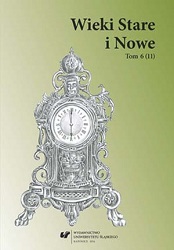Sistema seljans’kogo gospodarjuvannja ta ïï vpliv na tipołogiju seljans’koï rodinnoï strukturi (za materiałami Volini XVI — perszoï połowini XVII st.)
Peasant Economic System. Its Impact on the Typology of the Peasant Family Structure (based on sources on Volhynia in the 16th to the mid-17th Century)
Author(s): Iryna WoronczukSubject(s): History
Published by: Wydawnictwo Uniwersytetu Śląskiego
Summary/Abstract: The article aims at analyzing the question of peasant family typology as dependent on the economic system. There exists a view that as a consequence of the agrarian reform of 1557 in the Grand Dutchy of Lithuania, the dvorishche form of the peasant landownership, whose characteristic feature was patriarchal family, was transformed into Wallach system, which resulted in the concurrent disintegration of the patriarchal family into nuclear one. Relying on a considerable amount of documentary sources, the author asserts that the Wallach Reform in Volhynia, where lands were owned by dukes, was implemented very slowly. By mid-17th century most estates had been established within the folwark system, which required a larger labour force. Thus, the extended peasant family structure was preserved.
Journal: Wieki Stare i Nowe
- Issue Year: 11/2014
- Issue No: 6
- Page Range: 24-37
- Page Count: 14
- Language: Ukrainian

